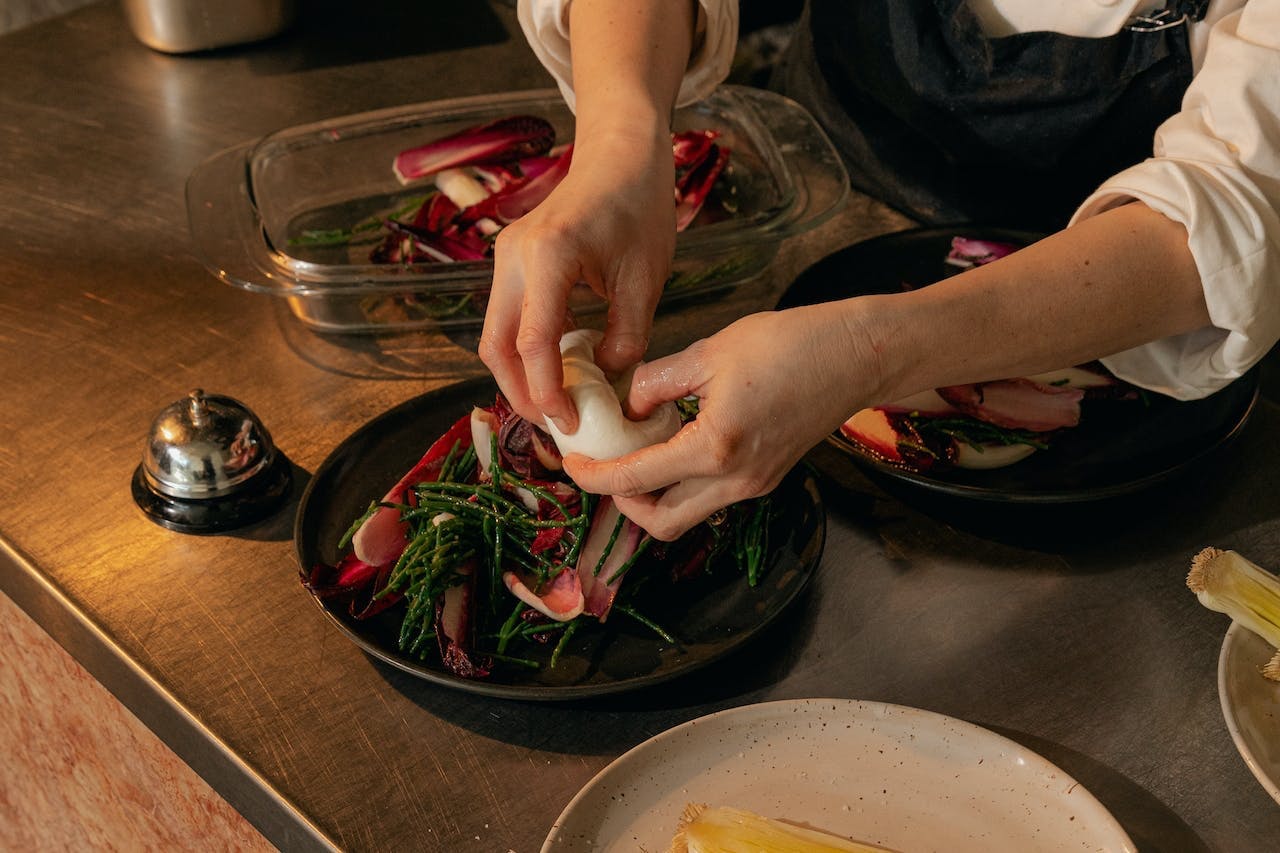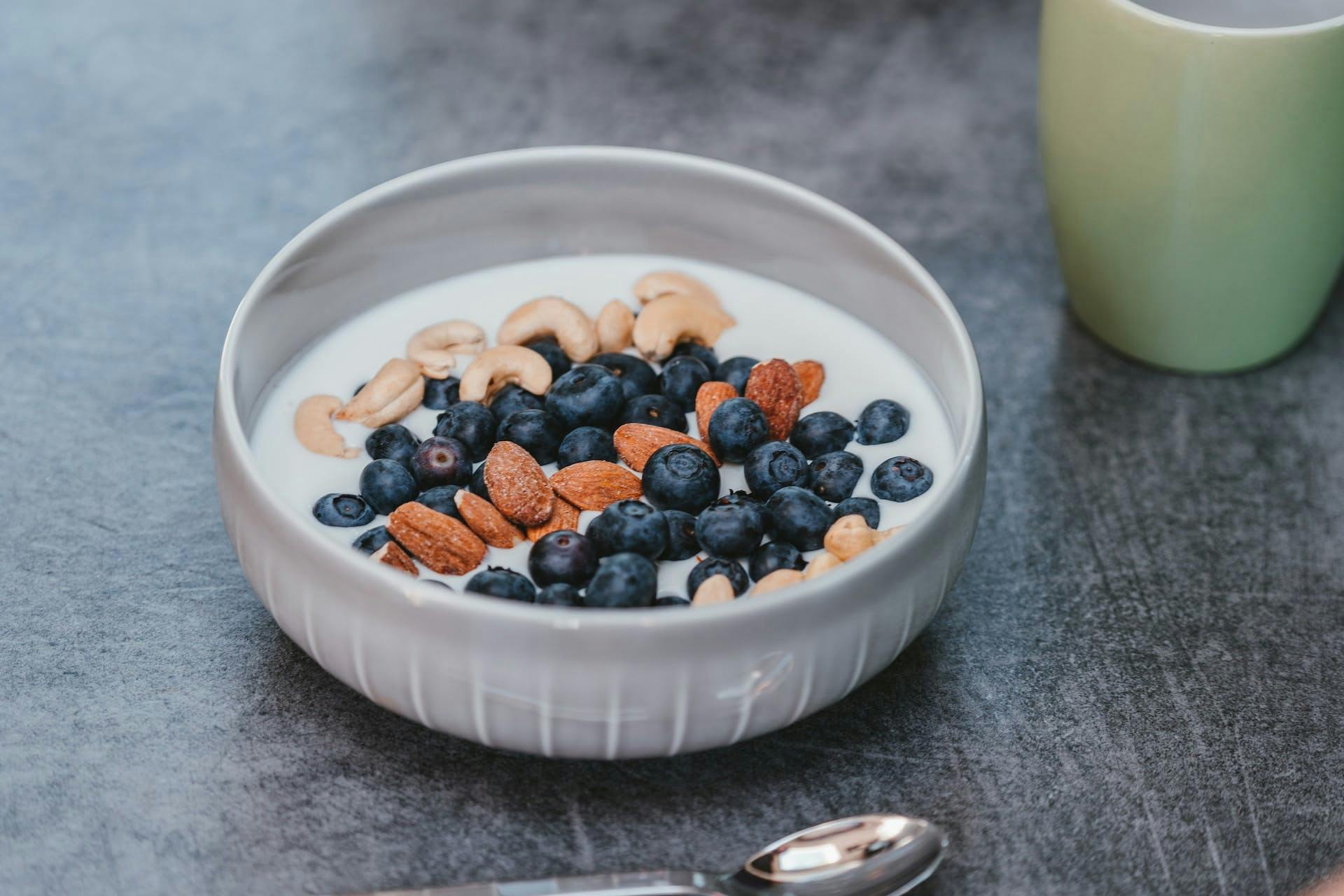The Mediterranean diet is one of the best dietary patterns for improving metabolic health, increasing insulin sensitivity, decreasing inflammation, and preventing type 2 diabetes [1-3]. Unlike other diets, it does not restrict entire food groups and allows for flexibility and adaptability to individual preferences and lifestyles. It includes fruits, vegetables, whole grains, legumes, healthy fats, herbs, spices, fish, and poultry, and less processed foods and added sugar. However, with great flexibility comes the potential for an overwhelming number of choices, and navigating the Mediterranean diet may seem daunting. This article will help you understand what foods meet the criteria for the Mediterranean diet, and how to incorporate them into your weekly grocery list.
1. High-fiber carbohydrates (whole grains, starchy vegetables)
Contrary to popular belief, you don’t have to avoid carbs entirely to prevent insulin resistance. However, it is important to choose carbs that are high in fiber and full of other nutrients like B vitamins. The carb sources in the Mediterranean diet include whole grains, starchy vegetables, and fruits. All of these are high in fiber which can help keep your blood sugar levels stable and decrease inflammation [13].
Whole grains to add to your grocery list
- Whole oats
- Quinoa
- Barley
- Amaranth
- Millet
- Popcorn
- Farro
Starchy vegetables to add to your grocery list
- Corn
- Peas
- Sweet potatoes
- Potatoes
- Butternut squash
- Beets
- Pumpkin
- Parsnips
Tips from a dietitian
- Vary your whole grains and starchy vegetables; each one has a slightly different nutrient and flavor profile. Try a farro salad instead of a pasta salad, or use quinoa as your base for a stir fry instead of rice [16].
- Love roasted potatoes? Add parsnips to add more crunch and a little extra calcium and zinc.
- Almost any starchy vegetable can be roasted with olive oil, garlic, and pepper to create a delicious side dish.
2. Colorful non-starchy vegetables
Non-starchy vegetables have fewer carbohydrates than their starchy counterparts. Carbs can be a great source of energy, but when eaten in excess and paired with a sedentary lifestyle, carbs can lead to health concerns like insulin resistance.
Try making half of your plate non-starchy vegetables to ensure you are meeting all your micronutrient requirements. Mix a variety of colorful vegetables on your plate, since different colors often represent different nutritional profiles — for example, red vegetables are rich in lycopene, while blue and purple vegetables contain antioxidants called anthocyanins [9]. You can learn more about all the benefits of each color in this article.
Non-starchy vegetables to add to your grocery list
- Red: tomatoes, red peppers, radish, rhubarb
- Yellow/orange: carrots, yellow or orange peppers, summer squash
- Green: spinach, asparagus, celery, cucumber
- Blue/purple: purple cabbage, purple cauliflower, eggplant
- White/brown: onion, mushrooms, turnips, cauliflower
Another classification of vegetables to be eaten daily are cruciferous vegetables–a group of plants in the Brassica genus. Cruciferous vegetables are rich in vitamins and minerals like folate, vitamin K, and vitamin C and contain phytonutrients — plant-based compounds that may help to lower inflammation [4].
Cruciferous vegetables to add to your grocery list
- Broccoli
- Cabbage
- Cauliflower
- Kale
- Bok choy
- Arugula
- Brussels sprouts
- Radishes
Tips from a dietitian
- Fresh, frozen, and canned veggies are all high in nutrients [8]. Do whatever works best for your budget and time constraints.
- Frozen vegetables are pre-washed and pre-cut and can reduce the prep time required for cooking. Though there are some flavor differences, you can make almost any dish with frozen vegetables instead of fresh ones.
- Frozen vegetables are picked at peak ripeness, and the freezer preserves the vitamins and minerals. Just be mindful of the added salt found in some canned and frozen vegetables!
3. Fruit
Similar to non-starchy vegetables, fruits are packed with vitamins and minerals. While fruit has naturally occurring sugars, it’s also high in fiber, which helps slow down glucose absorption. This helps the body regulate blood sugar levels. Fruits are also high in various phytonutrients that can decrease inflammation and increase insulin sensitivity [12].
Fruit to add to your grocery list
- Blueberries
- Raspberries
- Kiwi
- Peaches
- Pears
- Apples
- Cherries
- Plums
Tips from a dietitian
- Fruits are already naturally packed into a portable and appropriate serving size. Use fruits as snacks between meals paired with healthy protein or fat sources like nuts, Greek yogurt, or boiled eggs to stabilize blood sugar [14].
- It is important to eat your fruits whole or blended into a smoothie, rather than juiced, to keep the fiber content high.
4. Legumes
The key nutrients in most whole grains and starchy vegetables are fiber, carbohydrates, calcium, iron, and B vitamins. Legumes, which include beans, lentils, and peanuts, are high in these nutrients, but they also have protein, making them especially nutrient-dense. Several studies show that eating legumes can decrease your risk of developing insulin resistance, likely due to their high protein and fiber content [5].
Legumes to add to your grocery list
- Lentils
- Kidney beans
- Chickpeas
- Peanuts
- Cannellini beans
- Edamame
- Peanuts
- Black beans
- Black-eyed peas
Tips from a dietitian
- Try having themed days like “Meatless Monday” to help with planning and to increase your intake of plant-based proteins like legumes.
- If you aren’t ready to go meatless yet, try cutting your portion of meat in half and swapping it with a plant-based protein. For example, make lentil tacos using ground turkey mixed in with lentils [17]. Lentils are high in protein and fiber and have a similar texture to ground meat when cooked together.
5. Protein sources: fish, poultry, and low-fat dairy
Fatty fish like salmon and herring are key protein sources in the Mediterranean diet [6]. These fish are high in omega-3 fatty acids, which can help reduce inflammation, improve insulin sensitivity, and decrease cholesterol [7]. Poultry, particularly lean cuts, provides a high-quality source of protein without excessive saturated fats, aiding in weight management and glucose regulation. Low-fat dairy products contribute essential nutrients like calcium and vitamin D, which can support bone health [15].
Fish, poultry, and dairy to add to your grocery list
- Salmon
- Tuna
- Chicken
- Sardines
- Turkey
- Greek yogurt
- Eggs
- Kefir
Tips from a dietitian
- Don’t stress about having access to fresh fish if you don’t live by the water — the canned versions of these fish are still nutritious. They’re also easier to prepare and last much longer in your pantry.
- Try making different versions of your favorite dishes with a variety of proteins. Love tuna salad? Try making a salmon salad with canned salmon [18].
6. Healthy fats (nuts, seeds, oils)
Healthy fats, found in nuts, seeds, and oils, are a crucial component of the Mediterranean diet. Nuts like almonds and walnuts are high in heart-healthy monounsaturated fats, fiber, and protein. Seeds, like flaxseeds and chia seeds, add omega-3 fatty acids and fiber, promoting satiety and aiding in blood sugar control.
Healthy fats to add to your grocery list
- Walnuts
- Avocado
- Olive oil
- Flaxseeds
- Chia seeds
- Avocado oil
- Almonds
- Walnuts
Tips from a dietitian
- Both flaxseeds and chia seeds can be added to things like smoothies, yogurts, and salad dressings. Flax seeds contain more copper, thiamine, and magnesium while chia seeds have more selenium, iron, and calcium [10, 11].
- Try making your own jam with frozen fruit and chia seeds [19]. Add it to yogurt and top it with nuts — walnuts on one day and almonds on another to increase variety.
Key takeaways
- The plate method is a good way to make sure you are getting a balance of both macro and micronutrients, and it can apply to any diet pattern [20]. Try to make half of your plate non-starchy vegetables, a quarter of your plate protein like fish, poultry, and low-fat dairy, and then the remaining quarter high-fiber carbohydrates.
- Don’t stress about always having the “fresh” option on hand. It is okay to keep canned/frozen staples in your pantry and freezer for weeks when you have less time to prep. The nutrient content is mostly the same, and it is a great way to save time and prevent waste.
- Focus on variety to make sure you are getting all of the nutrients you need. Vary your vegetables and grains and try roasting a new vegetable every week to switch things up.
- Meal planning can be time-consuming and overwhelming if you don’t know what to make. Try making what I like to call “deconstructed meals.” You don’t have to try fancy new recipes and make a whole gourmet meal to eat healthy. Make sure you have a high-fiber carb, a protein source, and several non-starchy vegetables available by focusing on food groups on your grocery list rather than individual items. This way you can shop the sales and automatically increase your variety. For example, if broccoli and carrots are on sale--buy those! Next week a different item will likely be on sale, and you can save money while also increasing nutrient variety.
Weekly grocery list template for following the Mediterranean diet
- 2-3 fresh or frozen non-starchy vegetables (carrots, cauliflower, radishes)
- 1-2 bags of leafy greens (spinach, kale, spring mix, etc.)
- 2-3 fresh fruit options (blueberries, grapefruit, strawberries. etc.)
- Grains you use regularly that might be running low in your pantry OR a new grain you want to try (oats, quinoa, faro, etc.)
- 1-2 starchy vegetables (sweet potatoes,
- 1 type of fish (tuna, salmon, sardines, etc.)
- 1 lean protein source (poultry, turkey, etc.)
- 1-2 breakfast staples (Greek yogurt, eggs, etc.)
- No-prep sauces to make your meal easy (jarred tikka masala sauce, curry paste, etc.)
Leslie Johnson is a Registered Dietitian with her Master’s degree in Nutrition, Interventions, Communication, and Behavior Change from the Friedman School at Tufts University and is currently working at Family Health Services as the Food Is Medicine Program Director and at Firelands Health as an outpatient dietitian in the Firelands Center for Coordinated Care. She is passionate about all people having access to fresh, nutritious food that can help keep their bodies healthy and works to incorporate nutrition science, communication, and food equity in her everyday practice. You can find more information on her website.
References:
- https://health.usnews.com/best-diet/best-diets-overall?src=usn_pr
- https://www.ncbi.nlm.nih.gov/pmc/articles/PMC7468821/
- https://www.ncbi.nlm.nih.gov/pmc/articles/PMC10273006/
- https://academic.oup.com/ije/article/46/3/1029/3039477?login=false
- https://www.ncbi.nlm.nih.gov/pmc/articles/PMC5946219/
- https://www.ncbi.nlm.nih.gov/pmc/articles/PMC9710393/
- https://www.ncbi.nlm.nih.gov/pmc/articles/PMC5872768/
- https://kidneyhi.org/blog/fresh-frozen-or-canned-vegetables/
- https://www.ncbi.nlm.nih.gov/pmc/articles/PMC7770496/
- https://fdc.nal.usda.gov/fdc-app.html#/food-details/170554/nutrients
- https://fdc.nal.usda.gov/fdc-app.html#/food-details/169414/nutrients
- https://www.ncbi.nlm.nih.gov/pmc/articles/PMC3836143/
- https://www.ncbi.nlm.nih.gov/pmc/articles/PMC7059907/
- https://www.ncbi.nlm.nih.gov/pmc/articles/PMC7956086/
- https://www.ncbi.nlm.nih.gov/pmc/articles/PMC8794967/
- https://www.gimmesomeoven.com/mediterranean-farro-salad-recipe/
- https://aprettylifeinthesuburbs.com/turkey-lentil-tacos/#tasty-recipes-49418-jump-target
- https://therealfooddietitians.com/5-minute-salmon-salad/
- https://www.theconsciousplantkitchen.com/chia-seed-jam-recipe/
- https://healthy.kaiserpermanente.org/content/dam/kporg/final/documents/health-education-materials/instructions/mediterranean-healthy-plate-hi-en.pdf


